All good business leaders understand that people make the business. A company cannot scale without a connected, skilled, and motivated workforce. So why do companies continue to ignore the fact that the lack of investment in the individual employee is the primary contributor to the Great Resignation and Quiet Quitting movements?
“Labor is prior to, and independent of, capital. Capital is only the fruit of labor, and could never have existed if labor had not first existed. Labor is the superior of capital and deserves much the higher consideration.” – Abraham Lincoln
Labor is inextricably linked to capital, prosperity, and growth. For centuries the tug of war between labor and those who prosper from the labor has been an intense argument. The risk-takers reap the rewards, but the rewards only come from the labor of others. As Lincoln argues, capital(prosperity) cannot exist without labor, and the laborers should be of the highest consideration because they fuel the engine of prosperity and growth.
In the post-pandemic world, the push-pull between labor and management is fully displayed on social media and on the news. The rhetoric behind “people just don’t want to work” and “this generation…” comments highlight the clash between the older generation of workers and the new generation entering the workforce. The thought is that it is simply a generational difference, but it is more than that. The new generation of employees views their time and knowledge as commodities, forcing employers to compete for both.
A tight labor market has created an inverse power dynamic putting the labor in the driver’s seat. Employees are expecting a greater investment from their employers. They want to be a part of the success and have their contributions appreciated, not simply exchanging their time for money. Employees are looking for their knowledge and ideas to be valued. Most importantly, they are looking to be viewed as individuals with lives outside of the corporate machine.
What is happening?
As modern business leaders, we need to ask the hard questions behind why ‘The Great Resignation’ and ‘Quiet Quitting’ are taking place. We can follow the headlines and talk about the strong labor market with bored workers sitting at home distracted by social media, virtual everything, market bubbles and more, or we can take a hard look at how we interact with our employees.
As a leader:
- Do you view your employees as an investment that you want to grow, or do you view them as an expense that needs to be controlled?
- Do you want to invest in your employees’ long-term, or do you view them as a temporary expense?
- Does your current organizational structure reflect your perspective on employees?
Let’s face it labor is expensive and getting more expensive each year. Employees are challenging to recruit, train, insure, manage, and retain. According to the Society for Human Resource Management’s (SHRM’s) Human Capital Benchmarking Report, the average cost-per-hire in the United States is $4,129. If you have an attrition issue, this number begins to explode exponentially. It is like pouring oil into a car engine without a drain plug. For each employee you recruit, three more are leaving because, as a leader, you are not tackling the bigger issue; your organizational model is no longer functioning in this new work paradigm.
How did we get here?
The structure of an organization alone speaks volumes to employees. Most organizations follow a basic hierarchical framework that mimics military organizations. This model has been used for centuries and is familiar to most people, so it was readily adapted into corporate culture during the industrial revolution.

A ridged, hierarchical corporate framework made sense as we transitioned from an agriculturally-based society to an industrial-based society. The employee exchanged time for money, and most jobs were somewhat repetitive, operational, and manual. The traditional organizational design was also based on a military construct that felt natural to the workers and leaders at the time. Just like the military, the traditional hierarchical structure’s inherent objective is control.
Control manifests in several ways through control of information, concentration of perceived power, and control of personal growth.
- The control of information is the most damaging. It does not give employees the ability to make thoughtful and timely decisions concerning their own well-being.
- The concentration of ‘perceived’ power creates a dynamic of helplessness and rebellion in the employee. If you think you are powerless in an organization and unable to effect change and control your career, your option is to quit and find a more suitable environment.
- The control of personal growth is the most egregious of the three and feels personal. This form of control may look like withholding training and opportunities for career growth or not treating an employee like an individual or whole person.
All three forms of control are perpetuated by outmoded organizational models and contribute to employee attrition. People leave companies because they want to be treated with respect and have their voices heard. They want to be valued as individuals, not be in a command-and-control environment. Unsurprisingly, no amount of PTO will solve the issue of a manager who makes you feel disposable as they micromanage your work and monitor your lunch breaks.
Knowledge as a commodity
As leaders, we seek the best of the best to help innovate our businesses and leapfrog the competition by leveraging new technologies. We are no longer asking people to do repetitive tasks. We are asking technology workers to create, innovate and develop novel ideas. A rigid, hierarchical structure does not promote innovation. The managers in organizations are not incentivized to grow their people. They are incentivized to drive forward in their own career, get another stripe on their jacket, and move up the ranks.
The manifestation of the Great Resignation was a long time coming for many technology workers. The lockdowns were the catalyst that sparked the movement. The time spent not being busy with everyday activities like a commute, shuffling kids around, and racing to have a life allowed people to stop and think about what was important to them. For knowledge workers, that manifests in not having a feeling that their ideas are valued, and the lack of innovation becomes a driver for them to move on. If a technologist feels that they are beginning to stagnate or their creativity is being stifled, they want to find a greener field to innovate and try new ideas. The lack of training, the opportunities to work on new technologies, and being suppressed by middle managers wanting them to stay in a box is a recipe for attrition.
Knowledge workers, particularly technologists, view their knowledge as a commodity, not their time. Working 9-5 in a factory-style setting does not appeal to them. The exchange between a knowledge worker and the employer is not time; it is the ability to solve problems and innovate using new technologies, tools, and frameworks.
As leaders, how do we unlock and maintain our investment in the minds of technologists?
Where do we go from here?
Companies should consider this point in our history as the Great Inflection Point. This point is a once-in-a-generation opportunity to address the root of the talent retention issues in your organization. As modern business leaders, we must ask if we are putting a higher consideration on our labor force, or do we still view labor as commoditized factory workers? One would contend that if you ask someone to innovate your business on your behalf, you should value their efforts beyond a time and money transaction.
It is time to break down the outmoded organizational constructs that control individuals versus nurture employees and foster new ideas.
As a leader, it is critical to ask:
- How can I get the most out of my most expensive and most valuable resources?
- How do I give knowledge workers the freedom to create and architect the future while keeping control of my business?
- How can we maximize individual and maximize ‘People ROI’?
- How do you make an employee feel valuable?
- What kind of investment are you making in your employees beyond money?
- Are you respecting employees as individuals?
- Do you invest in them to make them the best they can be, regardless of the risk of attrition?
Companies typically do not have an issue investing in a new machine to produce a widget faster with less energy consumption knowing that part of that investment is the machine maintenance and upkeep. The longevity of the machine provides the best ROI.
The same holds true when you invest in an individual as you have a contract with that individual and pay for their ideas. Just as you would commit to regular maintenance to keep that machine running, you must commit to regular maintenance with your employees. It is paramount to keep the employee engaged, growing, and learning to maximize your investment. Your commitment to your employees should not be viewed as filling a role but rather as bringing someone into the organization who will grow, innovate and help you grow your business.
As a leader, you commit to that individual to develop them. Going back to the machine analogy, if you do not maintain the machine, oil the gears, and perform routine maintenance, the machine will break.
If we look at a typical, rigid “command & control” organizational structure, there is no provision or incentive to maintain the employee’s growth. Employees are viewed as replaceable and not worthy of investment. The top-down structure views the employee as an expense line in a spreadsheet, not as a human worthy of maintenance. In most large corporations, most employees are used until they are too expensive to maintain and are no longer valued. The value erodes over time because the machine is not maintained, there is no investment in training, no investment in career growth, and no investment in modern skills, so the machine, or employee, is taken offline and replaced by new machines (new hires).
Let’s break the model
Companies have tried to ‘flatten’ organizational structures over the years only to see the hierarchical structure reappear slowly and manifest into something even more rigid. Also, companies have tried to soften the “command & control” model by offering perks and incentives to the employees. These offerings only serve to reinforce the model. As an employee, you are not receiving anything meaningful that will help you grow as an individual. Like a parent in charge, the manager is giving you a gift to appease you temporarily.
A different perspective
What if we take a different look at typical organizational structures? How can we construct an organization to foster personal growth and incentivize leaders to focus on developing others? Can an organization’s success be based on the success and growth of the individual?
Promote and reward innovation
Implement frameworks that will promote innovation and idea generation within the company. Open the door to every team member to contribute. Reward innovation with the opportunity to make ideas a reality through meaningful engagement from leadership. Incentivize leaders to cultivate ideas and make them a reality.
Prioritize training
Too often, training becomes a victim of budget cuts. Lack of training should no longer be a barrier to learning. Leaders can leverage several internal and external resources to help employees grow. Develop and reinforce learning plans. Make personal training part of the culture versus making the employee beg for training to learn something new.
Transform managers into mentors
Managers need to be motivated to grow their teams. There needs to be meaningful engagement that is reinforced by a framework of review cycles and training plans to help individuals grow in their careers. The managers and leaders should be formally trained to properly provide feedback constantly and consistently to promote individual growth.
Focus on the individual versus the delivery
This is a difficult shift for leaders. The focus has always been on the delivery and accomplishing the goal regardless of the impact on the individual. We have all seen many large project initiatives swallow people whole. The focus needs to turn to the individuals on the project, ensuring they are empowered, trained, and supported so that they grow through the project’s lifecycle. Organizations can achieve this if this type of thinking is engrained in the culture.
Emphasize small teams
Review your organization and find ways to decompose the structure into smaller teams. Do not focus on installing leadership in each team. Look at the teams as functional, with each member having a role on the team. The roles can be rotational and allow individuals to grow in each role.
As companies look to retain and grow talent, it is not good enough to simply play lip service to developing and nurturing employees. It is time to take a serious look at how companies are structured and how individuals are motivated within that structure. It is not realistic to assume that tomorrow’s leaders will break down 100 years of tradition, structure, and culture, but leaders can take action now to reduce attrition and begin to move away from the pseudo-military style paradigm that seems to be failing.


















